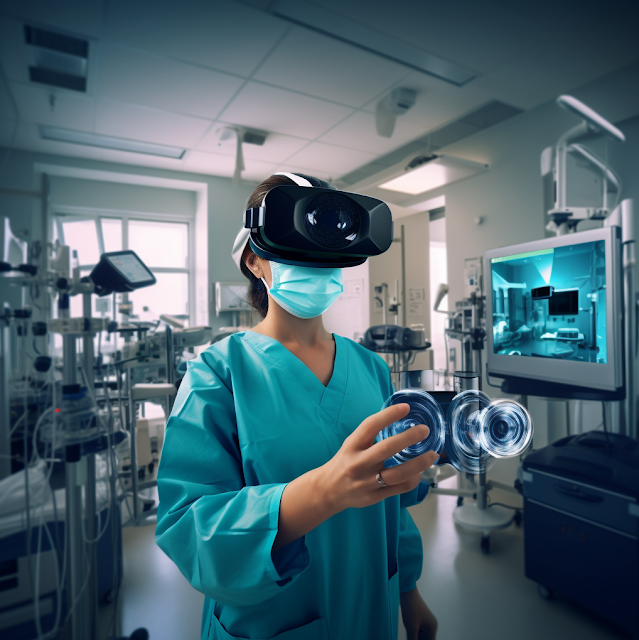Augmented Reality in Healthcare: Shaping the Future of Medicine
Augmented Reality in Healthcare: A Medical Marvel
Augmented reality seamlessly blends digital information and visuals with the real-world environment, making it an invaluable tool in the medical world. AR in healthcare offers a range of applications, from surgical guidance to medical training and patient education.
Applications of Augmented Reality in Healthcare
Surgical Navigation: Surgeons use AR to overlay digital images, such as MRI or CT scans, onto a patient's anatomy during surgery. This provides real-time guidance, allowing for more precise and minimally invasive procedures.
Medical Training: Medical students and healthcare professionals can access AR simulations and educational modules to practice surgical procedures and complex medical scenarios in a risk-free virtual environment.
Anatomical Visualization: AR enables healthcare providers to visualize and interact with 3D anatomical models, making it easier to explain medical conditions and treatment options to patients.
Telemedicine: AR can enhance telemedicine consultations by allowing physicians to see a patient's vital signs, medical history, and relevant data in real time, even during video calls.
Rehabilitation: AR-based applications assist patients in their rehabilitation process by providing real-time feedback and interactive exercises for physical therapy.
Benefits of Augmented Reality in Healthcare
Precision and Safety: AR enhances medical procedures, reducing errors and improving patient outcomes through real-time guidance and visualization.
Education and Training: Medical professionals can gain valuable experience and skills in a controlled environment, ultimately improving patient care.
Patient Engagement: Patients have a clearer understanding of their conditions and treatment options, leading to better-informed decisions and improved adherence to treatment plans.
Remote Consultations: AR facilitates remote healthcare services, allowing patients to access expert medical advice from anywhere in the world.
Efficiency: AR streamlines medical workflows, reducing time spent on administrative tasks and enhancing overall healthcare delivery.
Challenges and Considerations
While AR presents remarkable opportunities in healthcare, it also poses some challenges and considerations:
Technology Access: Widening the adoption of AR in healthcare may depend on the accessibility of AR-capable devices.
Data Privacy and Security: Protecting patient data is of paramount importance, requiring strict adherence to privacy regulations and data security measures.
Content Development: Creating high-quality AR applications and content for medical use can be resource-intensive and may necessitate specialized expertise.
Regulatory Compliance: AR applications in healthcare must comply with regulatory standards and undergo rigorous testing and validation.
Conclusion
Augmented reality is poised to revolutionize the healthcare industry, ushering in an era of precision, efficiency, and patient-centered care. As AR technology continues to advance and become more accessible, the potential for improving medical training, patient engagement, and surgical procedures is limitless. The future of healthcare is undoubtedly augmented, promising a new era of medical excellence and innovation. Augmented reality isn't just changing the way we practice medicine; it's shaping a healthier and more connected world. Welcome to the augmented future of healthcare!




